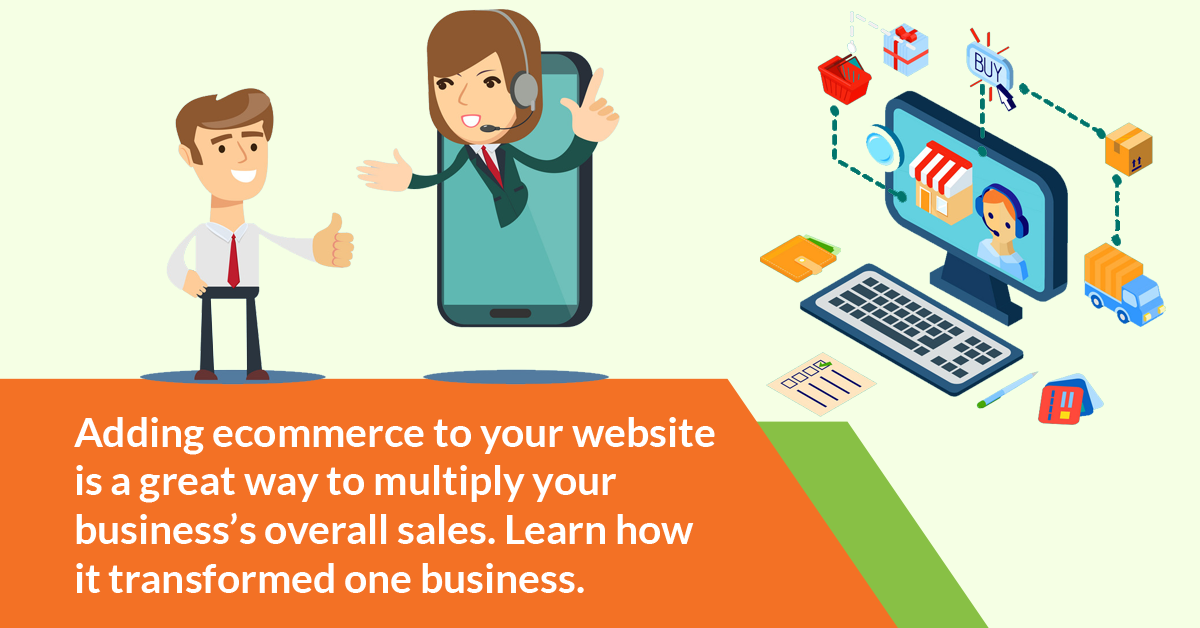
Adding ecommerce to your website is a solution that can apply to virtually any business—even if your business already has a loyal customer base coming to your store in person.
Local clientele is obviously great—but a website that incorporates online sales can expand your business to customers outside your immediate location & even create greater awareness in multiple areas.
And that means that your business’s Customer Value Journey is bringing more people along with your brand’s adventure.
Using Shopify (the same software we’ve use to power many clients’ ecommerce stores), you can showcase your products in attractive, responsive sites, provide discounts & coupons to users & equip your site with a variety of plugins to offer checkout experiences tailored to your customers’ needs & interests.
And as one independent cycling business found out, adding ecommerce to your website has the potential to multiply your sales & bring in a broader base of customers.

How Tokyobike Made The Move Online & Doubled Their Sales
Founded in Japan in 2002, Tokyobike migrated to Los Angeles in 2014 & began moving online. As the ecommerce industry & the convenience of online shopping have become more common, this is not an atypical move for businesses.
What Tokyobike’s founders did not expect was a 100% increase in sales in less than 6 months.
For one thing, selling bikes online appeared to be fraught with obstacles. Buying a bike is typically an in-person, hands-on experience that lets customers see if it will actually meet their purchase needs.
But that wasn’t all. Tokyobike’s products sell for around $900, which is far from being an online impulse buy. They are a long term investment, & long term investments typically require more thought than the majority of online purchases.
The business actually hadn’t planned on moving online at all, thinking that these obstacles would be impossible to overcome. But when customer traffic in their New York City location far exceeded the store’s capacity, they knew they had to offer more purchase options.
First, they tried capturing lead information in purchase by having customers write their names & phone numbers on cards, but this took too much time & decreased the staff’s ability to have personal encounters with customers & truly meet their needs.
Therefore, ecommerce was clearly the next step. The company developed a system where customers could visit the store to look at merchandise in person & “test ride” it.
Customers then place the orders themselves online & return to the store for pickup at a later time. This often facilities a move toward a return path for customers—once they arrive at the store, they realize the need for additional purchases, like helmets, water bottles, tools & more.
Having purchased the core offer online, customers are now back in the story to ascend to the level of repeat buyers.
The actual checkout experience has also saved time for both customers & staff, with their point of sale software operating at a more efficient level. This also provides staff with the opportunity to assist in-store customers & answer questions before they make their purchase on the website.
Ultimately, Tokyobike has succeeded in creating an ecommerce experience that seamlessly blends the unique, interactive environment of their stores with the convenience & efficiency of shopping online.
Not only did adding ecommerce to their website initially double their sales, but today, the company has increased sales across the country, led to multiple worldwide locations & reduced their sales cycle from 14 to 30 days to just 1 week.
What Tokyobike Teaches About Adding Ecommerce To Your Website
There is a lot for businesses to learn about adding ecommerce to your website from Tokyobike’s success.
To begin with, no business is outside the realm of using ecommerce strategies. You may think that because you sell a product that is most commonly bought in person or you primarily sell a service that these tools don’t apply to you.
In fact, there are ways to include a physical product or even accept payment as part of your website no matter what you are selling.
For example, if you own a lawn care service or beauty services, have customers make an appointment & prepay online.
If you sell large premium items like the bikes, incorporate an online payment option to streamline activity in your store & create a better experience & atmosphere for customers.
If you own a restaurant, install ecommerce to allow customers to purchase menu options & place orders for pickup.
Remember—your website is the primary vehicle customers travel in through each stage of their Customer Value Journey.
Adding ecommerce to your website gives them just another opportunity to complete the stages of their adventure online & further their interest in your company.
Tokyobike’s experience with Shopify also shows that ecommerce & brick & mortar businesses can work together. They are not mutually exclusive strategies where your business has to choose one or the other.
In fact, as this business experienced, adding ecommerce to your website can even result in the overall expansion of your products & services to cater to even more customers in multiple locations.
Having a good website is obviously a must for staying competitive as a business & reaching the broadest possible audience.
But adding ecommerce to your website can make the services you provide online even more powerful by making the experience more exciting, personal & convenient for customers.
How To Start Adding Ecommerce To Your Website
As a Shopify partner, Cirius Marketing constructs attractive, responsive ecommerce websites that let you promote & sell products that speak to your ideal customers.
Using our Customer Value Journey model, we map the experience that will take total strangers to your product or service & turn them into evangelists for your business.
If you have questions or want to learn how we can make it happen for your business, reach out to hello@ciriusmarketing.com or simply call us at 855-607-7766.
In the meantime, find out more about our patented formula for websites that work by checking out our One Size Fits All Website Template. Get introduced to the 7 must-have elements for a successful website & see how yours measures up.
